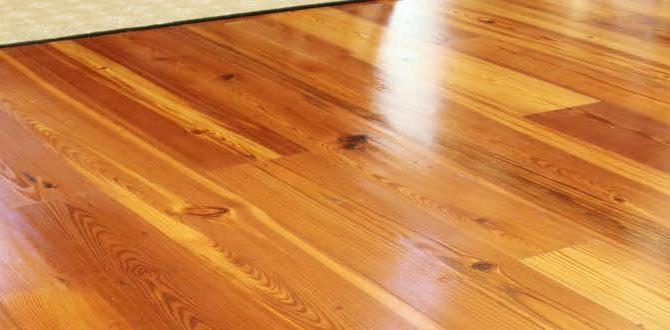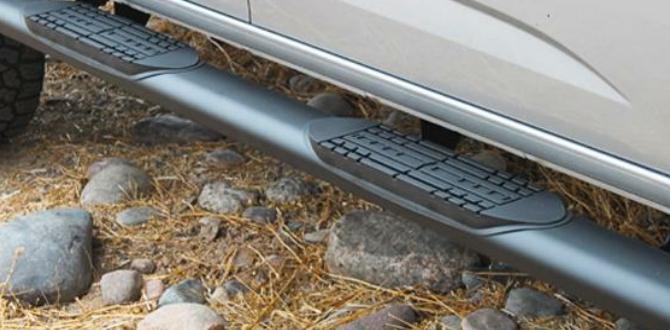Quick Summary: Keep your nail gun running smoothly with essential cleaning kit items like lubricants, brushes, and cleaning cloths. Regular maintenance prevents jams, extends tool life, and ensures safe, efficient operation for all your DIY projects. Invest in the right kit for reliable performance.
Hey there, fellow DIYers and woodworkers! Jack Shaffer here, your friendly neighborhood Nailerguy. Ever found yourself wrestling with a nail gun that just won’t cooperate? Maybe it’s jamming, or the nails aren’t firing with the force they should. It’s a common frustration, especially when you’re in the middle of a project and time is ticking!
Don’t worry, it’s usually not a sign of a broken tool. More often than not, it’s simply a case of your nail gun needing a little TLC. A dirty nail gun is an unhappy nail gun, and an unhappy nail gun can ruin your day (and your project!).
The good news? Keeping your nail gun in tip-top shape doesn’t require a master’s degree or a toolbox full of exotic gadgets. With just a few key items – your nail gun cleaning kit essentials – you can tackle this maintenance task with confidence. We’ll walk through exactly what you need and why each item is a game-changer.
Ready to restore your nail gun’s power and prevent future headaches? Let’s dive in and see what makes the perfect nail gun cleaning kit!
Table of Contents
Why Cleaning Your Nail Gun Isn’t a Chore, It’s a Necessity
Think of your nail gun like a trusty sidekick on your woodworking adventures. It helps you build fences, assemble furniture, add trim, and so much more. Just like any tool that works hard, it picks up dust, debris, and even build-up from the oil and air it uses. Over time, this gunk can really slow things down.
This debris might not seem like a big deal, but it can cause several annoying problems:
- Jams: Clogged mechanisms are the number one reason for nail gun jams.
- Reduced Power: A dirty piston or air passages mean your nail gun can’t deliver its full punch.
- Inconsistent Firing: You might get weak drives or nails that don’t set properly.
- Sticking Parts: Moving components can become stiff and slow, making the tool feel sluggish.
- Shorter Lifespan: Neglecting maintenance is a fast track to premature tool failure and costly repairs.
Cleaning your nail gun regularly isn’t just about fixing problems; it’s about preventing them. It’s a simple, proactive step that keeps your tool reliable and ready for action. Plus, who wants to deal with a jammed nail gun when they’re trying to finish a project?
Nail Gun Cleaning Kit Essentials: Your Go-To List
Building a comprehensive nail gun cleaning kit is straightforward. You don’t need to buy a pre-made kit that might contain items you’ll never use. Instead, you can gather these essential components yourself. This approach often saves money and ensures you have exactly what you need.
Here are the proven must-haves for your nail gun cleaning kit:
1. Lubricant: The Lifeblood of Your Nail Gun
This is arguably the most important item in your nail gun cleaning kit. Without proper lubrication, moving parts will grind against each other, causing wear and tear. Not just any oil will do, though!
- What to Look For: You need a light-weight, non-gumming lubricant specifically designed for pneumatic tools. These are often called “air tool oil” or “compressor oil” (though ensure it’s the light, non-detergent type for most smaller tools). Some manufacturers offer proprietary nail gun oil.
- Why It’s Essential: It reduces friction, prevents rust, keeps seals supple, and ensures smooth operation of the piston and driver blade.
- Common Mistakes to Avoid: Never use WD-40 or general-purpose oils. They can actually attract dust and gunk, or break down the rubber seals inside your nail gun over time.
A good rule of thumb is to lubricate your nailer according to the manufacturer’s instructions, typically a few drops after a day’s use or before storing it.
2. Cleaning Brushes: Tackling the Tough Stuff
These bristle-powered tools are your best friends for getting into the nooks and crannies where dust and debris love to hide. You’ll want a variety to handle different areas.
- Stiff Bristle Brush: Ideal for scraping away dried-on gunk from the exterior, magazine, and around the nosepiece. Think of it like dental floss for your tool!
- Small Wire Brush: Useful for stubborn residue, but use it gently on metal parts to avoid scratching.
- Nylon or Brass Brush: Safer for more delicate components or if you’re concerned about scratching.
- Specialty Cleaning Brushes: Some kits come with thin, pipe-cleaner-like brushes specifically designed to clean the internal air passages. These are incredibly handy.
Having a selection allows you to choose the right brush for the job, ensuring you clean effectively without causing damage.
3. Cleaning Solvent or Degreaser: Dissolving the Grime
Sometimes, a brush alone just isn’t enough. For sticky residue, old lubricant build-up, or really stubborn grime, a gentle cleaning solvent is a must-have.
- Recommended Types: Look for citrus-based cleaners, isopropyl alcohol (rubbing alcohol), or specialized pneumatic tool cleaners.
- Why They Work: These solvents help break down and dissolve grease, oil, and dried dirt, making them much easier to wipe away.
- Safety First: Always use these in a well-ventilated area and follow the product’s safety guidelines. Avoid getting solvents on rubber parts for extended periods, as some can cause them to swell or degrade. A quick wipe is usually fine.
A little bit of solvent on a cloth or brush can work wonders on tough buildup.
4. Lint-Free Cloths or Rags: The Wiping Warriors
You’ll be doing a lot of wiping, so having the right kind of cloth is crucial. You don’t want to leave behind little bits of fuzz that will just get sucked back into your tool!
- Microfiber Cloths: These are fantastic because they are highly absorbent, durable, and don’t leave lint behind.
- Cotton Rags (Clean and Lint-Free): Old, clean cotton t-shirts can be cut up into rags. Just make sure they are genuinely lint-free.
- Paper Towels (Heavy Duty): For really messy jobs, strong paper towels can also work, but again, watch for lint.
Having a generous supply means you can always use a clean cloth for the final wipe-down, ensuring your nail gun is spotless.
5. Allen Wrenches (Hex Keys): For Disassembly
Most nail guns come with a small set of allen wrenches. These are vital if you need to perform a more thorough cleaning, like removing the nosepiece or accessing internal components.
- Why They’re Needed: Many nail guns use hex screws for assembly. You’ll need the correct size to take apart certain sections for deeper cleaning or to clear jams from the inside.
- Check Your Tool: Refer to your nail gun’s manual to identify which sizes you’ll need and ensure you have them readily available.
Keep these with your cleaning supplies so you’re not scrambling to find them when the need arises.
6. O-Ring Lube (Specific): For Advanced Maintenance
While general air tool oil is crucial, some nail gun manufacturers recommend a specific O-ring grease for maintaining the rubber seals. This is typically a thicker, silicone-based lubricant.
- Purpose: This specialized grease keeps the O-rings pliable and prevents them from drying out or cracking, which is essential for maintaining air pressure and preventing leaks.
- When to Use: This is usually part of a more in-depth service, often recommended annually or if you notice slight air leaks around the tool. Consult your manual.
For most casual users, regular air tool oil is sufficient, but it’s good to be aware of this for long-term tool health.
7. A Small Container or Tool Roll: Keeping it Organized
All these bits and pieces can get lost easily. Having a dedicated bag, small toolbox, or even a sturdy resealable bag will keep your cleaning essentials together, clean, and ready to grab when you need them.
| Item | Purpose | Frequency of Use | Key Considerations |
|---|---|---|---|
| Air Tool Oil | Lubricates moving parts, prevents rust. | After each use, or daily. | Use light, non-gumming oil. Avoid WD-40. |
| Stiff Brush | Scrapes away stubborn dirt and grime. | As needed, during deeper cleans. | Nylon, brass, or stiff synthetic bristles. |
| Cleaning Solvent | Dissolves sticky residue and dried oil. | As needed, for tough jobs. | Citrus-based, Isopropyl Alcohol, or tool-specific cleaner. Ventilated area. |
| Lint-Free Cloths | Wiping away dirt, excess oil, and solvent. | During and after every cleaning. | Microfiber or clean cotton rags are best. |
| Allen Wrenches | Disassembly for internal cleaning. | Occasionally, for deeper maintenance. | Match the sizes required by your nail gun. |
| O-Ring Lube (Optional) | Maintains rubber seals, prevents leaks. | Annually or if leaks are noticed. | Silicone-based grease (check manual). |
Step-by-Step: How to Clean Your Nail Gun
Now that you know what you need, let’s get to the actual cleaning. This process is simpler than you might think, and doing it regularly will make a huge difference. Always refer to your specific nail gun’s manual for detailed instructions, as some models have unique requirements.
Step 1: Safety First – Disconnect and Depressurize
This is the most critical step. Never clean or work on a nail gun while it’s connected to an air compressor or has pressure in the line.
- Disconnect the Air Hose: Pull the fitting from the nail gun’s air inlet.
- Remove Any Batteries (if cordless): For battery-powered models, remove the battery pack.
- Fire a Test Shot (optional but recommended): While holding the nail gun away from anything (and with safety glasses on!), deliberately try to fire it while pressing the trigger. This helps release any residual air pressure trapped in the tool.
Seriously, don’t skip this. A sudden firing can cause injury.
Step 2: Exterior Cleaning
Start with the outside. This is where most of the visible dust and dirt accumulates.
- Use a Dry Stiff Brush: Brush away loose dust and debris from the entire exterior of the tool. Pay attention to vents and openings.
- Wipe Down: Use a lint-free cloth to wipe off the dust you’ve brushed away.
Step 3: Magazine Maintenance
The magazine is where the nails load, and it can get gummed up with nail debris and dust.
- Clear the Magazine: Ensure no nails are loaded.
- Brush the Track: Use your stiff brush to clean out the nail track. If there’s sticky residue, lightly dampen a cloth with your cleaning solvent (like isopropyl alcohol) and wipe the track.
- Wipe Dry: Use a clean, dry cloth to remove any solvent residue.
Step 4: Cleaning the Nosepiece and Trigger Area
This is another area prone to build-up that can affect nail firing.
- Brush: Use your stiff brush to clean around the nosepiece where the nails exit.
- Solvent (if needed): For stubborn gunk, apply a small amount of solvent to a cloth or brush and clean the area thoroughly.
- Wipe Clean: Ensure all residue is removed with a clean cloth.
- Trigger Check: Make sure the trigger moves freely. If it feels sticky, use a small amount of solvent on a q-tip or cloth to clean around it.
Step 5: Internal Cleaning (If Necessary & for Deeper Maintenance)
This step is for when you’re experiencing performance issues or doing a more thorough tune-up. Consult your manual to see how to safely access internal parts like the piston driver or air cylinder.
- Disassemble Gently: Use the appropriate allen wrenches to carefully remove screws and access the internal components as per your manual. Keep track of all parts!
- Clean the Piston and Cylinder: Gently wipe down the piston drive and the inside of the cylinder with a lint-free cloth and a tiny bit of cleaning solvent if needed. Avoid abrasive materials that could scratch the piston.
- Check O-rings: Inspect O-rings for wear or damage. If you have O-ring lube, apply a thin, even coat to keep them supple.
- Reassemble Carefully: Put all parts back in the correct order. Tighten screws snugly but don’t overtighten them.
Need to know more about how pneumatic tools work? The National Institute for Occupational Safety and Health (NIOSH) offers some great resources on the safe use and maintenance of pneumatic equipment.
Step 6: Lubrication
This is where the air tool oil comes in. Proper lubrication is essential for smooth operation and longevity.
- Locate the Air Inlet: Find the port where the air hose connects.
- Add a Few Drops: Add the recommended number of drops of air tool oil. Typically, it’s 2-5 drops, but always check your manual.
- Work it In: Reconnect the air hose (briefly, or use a compressor if safe) and attach the tool to an air source. Fire a few test shots to distribute the oil throughout the internal mechanism.
Some experts suggest adding oil every day or every few hours of continuous use, while others say a few drops before storage is enough. It’s best to follow your manufacturer’s recommendation.
Step 7: Final Wipe Down and Test
Give the entire tool a final wipe with a clean cloth to remove any excess oil or solvent. Then, re-connect your air hose (or battery) and perform a few test shots on a scrap piece of wood to ensure it’s firing correctly and powerfully.
If your nailer uses a depth adjustment, make sure to check that it’s working properly after cleaning, as sometimes debris can interfere with these mechanisms.
When to Clean: A Simple Schedule
Establishing a cleaning routine means your nail gun is always ready when you need it. Here’s a basic guideline:
- After Each Use (Quick Clean): Give the exterior a quick brush and wipe down. Add a few drops of lubricant. This is especially important if you’ve been working in a dusty environment.
- Weekly (or after heavy use): A more thorough cleaning of the magazine, nosepiece, and trigger area.
- Monthly (or as needed): For deeper cleaning, you might need to disassemble some parts and use a solvent. If you only use your nail gun occasionally, a monthly clean might suffice.
- Annually (or if performance degrades): A full service, including checking and lubricating O-rings, and potentially cleaning out the drive cylinder more thoroughly.
The best advice is always to refer to your specific tool’s manual. Some high-use


